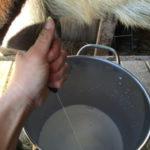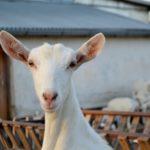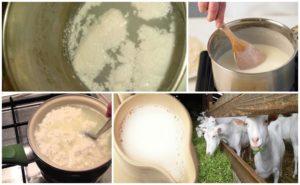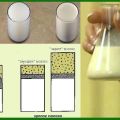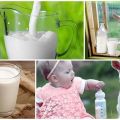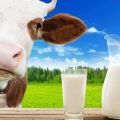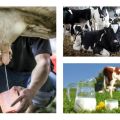Fat content of goat and cow milk and how to determine at home
Dairy products play an important role in the life of a person, especially children. By comparing the fat content of goat and cow milk, as well as other indicators, you can decide which one is more useful. Experts tell about the content of vitamins, microelements and other useful substances in the product. But the fat content of milk can be determined even at home.
What is the fat content of goat milk
The fat content of goat milk varies from 3.2% to 6.5%. This percentage depends on several reasons. First of all, the breed of animal influences the composition of the final product. The highest fat milk comes from Nigerian dwarf goats. The smallest fat content is found in Saanen and Toggenburg.
The amount of fat in a dairy product is influenced by the feed used. In the spring, when goats eat young growth, milk yield increases, but the fat content of milk decreases. During this period, concentrated feed should be added to the diet. From the middle to the end of summer, when the grass loses its juiciness, the nutritional value of milk increases, but its quantity decreases.
To a large extent, the fat content of goat milk changes during lactation, which lasts about ten months. After the birth of the kid, up to fifteen days, the goat produces colostrum of high oiliness. Then, about nine months, medium fat milk yield. Milk production ends with a fifteen-day yield of high-fat milk, which is called old-milk. After that, the goat must be inseminated so that it can begin to milk again.

Among other things, the genetic factor, metabolic rate, harmonious body structure affect the fat content and amount of dairy product. The skill of udder care depends on the hostess. It should be kept clean, properly dispensed and massaged, and milked at least three times a day. Morning milk always contains a higher percentage of fat. With good care and proper feeding, a goat produces an average of three liters of milk.
How to determine it at home
When buying milk in a store, you can easily find out its fat content, such information is contained on the package. In veterinary laboratories, in production facilities and in reception centers, there is special equipment that determines the composition of milk with high accuracy within a few minutes.The owners of mini-farms can ask for help from specialists to accurately determine the fat content of milk yield. It will be more difficult to find out the fat content in homemade milk or purchased from private companies on the market, but it is still possible. This requires:
- Prepare a glass, marker or felt-tip pen, ruler or tape measure.
- Wipe the top of the container with a cotton pad soaked in alcohol.
- Measure ten centimeters from the bottom of the glass, making markings one millimeter at a time.
- After the measuring cup is ready, one hundred milliliters of milk is poured into it.
- After twelve hours, you can evaluate the result. The thickness of the cream, measured in millimeters, will represent the fat percentage.
This is the only way to determine the approximate fat content of milk at home.
Which milk is fatter: goat or cow
If we compare the milk of a goat and a cow, then the first is certainly fatter. To check this, you need to pour goat's milk into one glass, and cow's milk into the second. After a few hours, cream appears on the surface of the milk, but the settled cow's milk becomes bluish, and goat's milk does not separate all the fat, since it is fine-grained, fat globules are distributed throughout the glass. Despite the fact that the layer of cream is almost the same, the fat content of the milk is significantly different.
Depending on the breed of goat, the fat content ranges from three and a half to six percent. And homemade cow's milk - from 3.2 to 5%.
Any milk contains the same substances, but their amount is different. The goat product contains more calcium (33%, in the cow - 28%), higher calorie content, more iron, vitamin A, potassium, magnesium. The level of beneficial fatty acids is 15% higher than in bovine.
Goat milk has a low lactose content, half the fat molecules, which allows the product to be better absorbed. Casein A1 is absent, due to this feature the product does not cause allergic reactions. Saturated fat promotes better absorption of vitamins.
Despite the fact that goat's milk is fatter than cow's milk and can be considered more difficult for the body, this is not the case. Due to the presence of fat in a finely dispersed state, the product is well absorbed even by a child's body. The presence of useful amino acids, vitamins and other substances has a beneficial effect on the gastrointestinal tract and other human organs.

